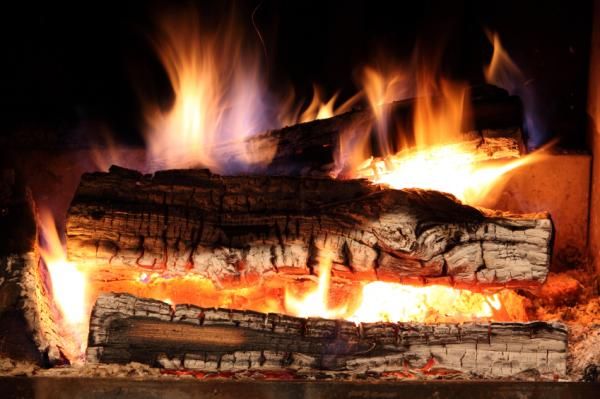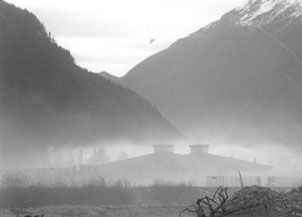Wood Smoke Problems
What is Wood Smoke?

Smoke is composed of many small particles of carbon and other compounds from burning of organic matter such as wood or coal. Wood smoke is made up of over 100 different chemicals and compounds including particulates, carbon monoxide, methane, volatile organic compounds (VOCs), dioxins, lead, cadmium and arsenic. It contains harmful toxins and other substances known to cause cancer. Nationally, about 35% of fine particle pollution comes from the burning of fireplaces and wood stoves.
Why is Wood Smoke a Problem?

Skagway school enveloped by smoke on an inversion day
Wood smoke from indoor and outdoor burning is unhealthy. The threat to human health comes from fine particulate matter too small to be filtered by the nose and upper respiratory system, thus entering the lungs. It can stay in the lungs for long periods of time causing structural damage and chemical changes to the internal environment. During winter when the air becomes stagnant due to temperature inversions, these fine particulates from wood smoke are trapped close to the ground in our breathing space. The exposure to wood smoke is harmful to family members or neighbors with cardiovascular disease, asthma, or other respiratory problems.
The links below further detail particulate matter and its affect on human health:

 Indicates an external site.
Indicates an external site.